
Apxic Technologies offers AngularJs training in Chandigarh with live project .Our AngularJS course is constructed to expose you on each Angular topic to the best available resources. Our desire is to present these topics richly, and from a variety of vantage points, in order to afford you a complete perspective on them.
AngularJS is a JavaScript framework that embraces extending HTML into a more expressive and readable format. It decreases emphasis on directly handling DOM manipulation from the application logic, allowing for easier testing. It employs efficient two-way data binding and sensible MVC implementation, reducing the server load of applications. It features directives, which are incredibly robust tools that are significant contributors to Angular’s ubiquity.
AngularJS is self-described as ‘HTML enhanced for web apps’, and it is most certainly that.
Google’s Angular family of frameworks are extremely productive for complex “Single Page Apps”. Angular can be tough to learn, and you need to learn it well to obtain all its benefits. We can’t make it easy, but we can teach you – and we focus on real, complex data-centric applications.
Angular 2.0 shipped in September 2016, followed by Angular 4.0 in March 2017. Our curriculum is kept up to date for Angular 2/4 and beyond. We also offer classes for AngularJS 1.x.
What Is Angular?
AngularJS is a structural framework for dynamic web apps. It lets you use HTML as your template language and lets you extend HTML’s syntax to express your application’s components clearly and succinctly. Out of the box, it eliminates much of the code you currently write through data binding and dependency injection. And it all happens in JavaScript within the browser, making it an ideal partner with any server technology.
Angular is what HTML would have been had it been designed for applications. HTML is a great declarative language for static documents. It does not contain much in the way of creating applications, and as a result building web applications is an exercise in what do I have to do to trick the browser into doing what I want.
AngularJS Features:
Below are the following features of AngularJS which make it the most powerful frameworks in the market. MVC- AngularJS is built on the famous concept of MVC (Model-View-Controller). MVC design pattern used in all modern day web application and it is based on splitting the data layer, business logic layer, and presentation layer into a different section. Each layer could be managed easily as they split into different sections.
Data Model Binding- You don’t need to write special code to bind data to the HTML controls. This can be done by Angular by just adding a few snippets of code.
Writing Less Code- In angular less amount of code is required to write for DOM manipulation.
Unit Testing Ready- A testing framework called ‘Karma’ also developed by the designer which helps in designing a unit test for AngularJS applications.
Advantages of AngularJS over Web Applications
- Simple Architecture
- Improved Design Architecture
- Declarative User Interface
- Lesser Timeline
- Lesser code and Increase development efficiency
- Code Reusability
- Dependency Injection
- Two-way Data Binding
- Improved server performance
- Convenient Testing
- Parallel Development
- Grants control to Developers
- Helps manage state
The Popularity of AngularJS Jobs:
- Are you looking for a career as an AngularJS developer? So not to worry, you have selected one of the popular fields to start your career. The popularity of developers with AngularJS skills is rising in the market due to its importance in the development of web applications. In the today market, there is a broad range of opportunities available for the AngularJS developer. Most of the startup and MNC companies hire AngularJS developers for their web development projects.
CALL US NOW AT 7497897720 FOR PROFESSIONAL ANGULARJS TRAINING
AngularJS Training-Course Content
- Introduction to Angular
What is Angular?
Features of AngularJS and Angular.
AngularJS (vs) Angular.
Steps to Set up for the local development environment.
Executing First Angular program using NodeJS and NPM.
Executing First Angular program using Visual Studio. - Angular Architecture Basic Building Blocks of Angular Applications.
Angular Modules and @NgModule decorator.
Angular Libraries.
Component, Templates, and Metadata.
Services and Dependency Injection. - Displaying Data using Templates About Directives.
Components Properties and Interpolation.
Built-In Directive.
Creating a class for data (Model object)
Template Expressions.
Working with Arrays.
External HTML Template File. - Data Binding Binding properties and Interpolation.
One-way Binding / Property Binding.
Event Binding.
Two-way Binding.
Two-way binding with NgModel.
Attribute Binding.
Style and Class Binding. - Styles Binding Style and Class Bindings.
Using Component Styles.
Special selectors.
Loading Styles into Components. - Advanced Component Features Revising what are Components?
Components Life-Cycle Hooks.
Dynamic components using component Outlet. - Template Driven Forms. Create the component that controls the form.
Create a template with the initial form layout.
Bind data properties to each form input control with the ngModel two-way data binding syntax.
Add the name attribute to each form input control.
Add custom CSS to provide visual feedback.
Show and hide validation error messages.
Handle form submission with submit.
Disable the form submits button until the form is valid.
Resetting the form. - Reactive Forms. Reactive Forms Introduction.
More Form Controls.
Form Control Properties.
set Value and patch Value.
Validating Form Elements.
Submitting and Resetting forms.
Observing and Reacting to Form Changes.
Using Form Builder. - Pipes Built-in Pipes.
Using parameters and chaining Pipes.
Custom Pipes.
Parameterized Custom Pipe.
Pipes and Change Detection.
Pure and Impure pipes. - 10.Custom Directives. Custom Attribute Directive.
Using HostListener.
Using HostBinding.
Custom Validator Directive. - 11: Dependency Injection. Understanding Dependency Injection.
Understanding DI in Angular Framework.
Exploring Provider.
Types of Tokens.
Types of Dependencies.
Configuring DI using Providers.
Implementing DI in Angular.
Optional Dependencies.












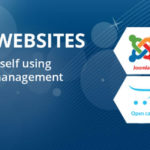
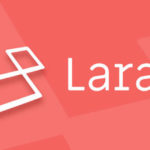


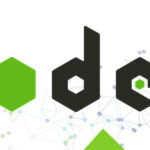
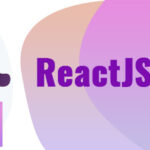





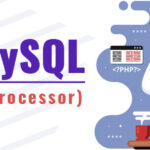



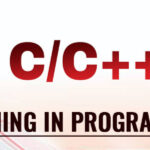

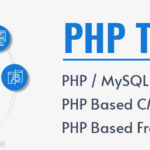



Recent Comments